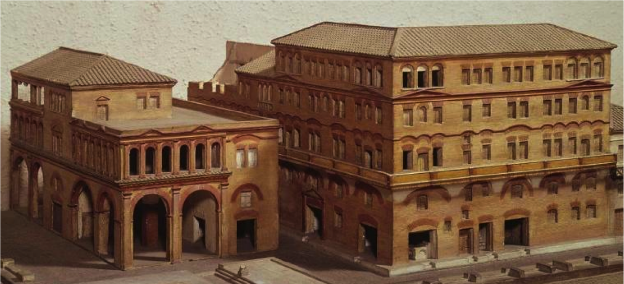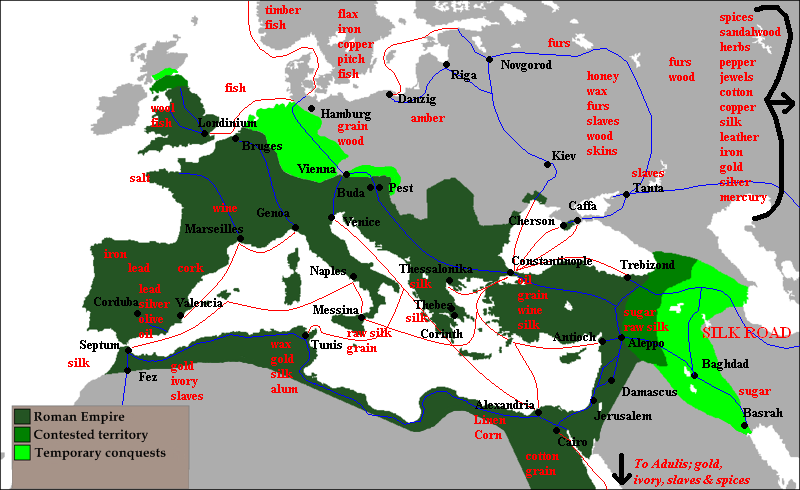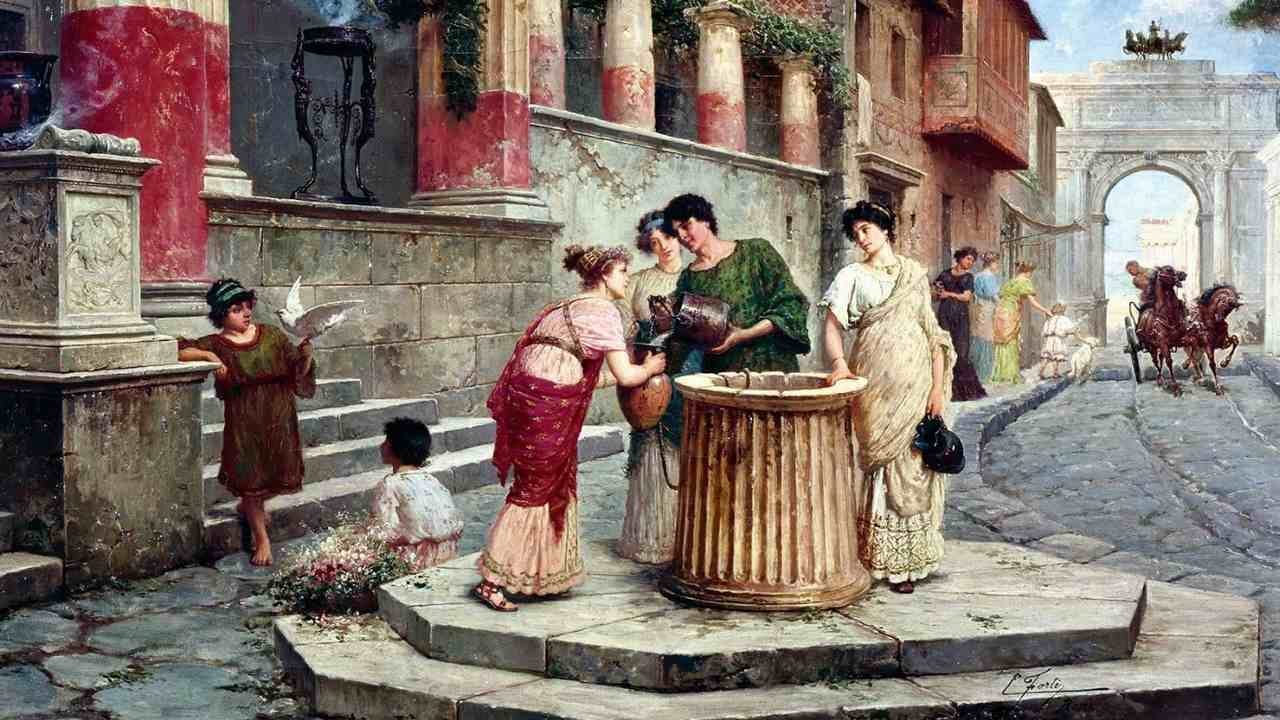Wealth among the elite in ancient Rome reached levels that are hard to imagine today. Some individuals owned thousands of slaves, massive herds of cattle, and enormous estates. Their money came from many sources—including property ownership, real estate in booming cities, and investments in human labor. Most of their wealth was not kept as cash, but instead held in land and other valuable assets.
Roman high society often avoided direct business ventures, but that did not stop them from finding clever ways to profit from commerce, lending, and investment. Their fortunes allowed them to live comfortably and make impressive public displays. Exploring their financial choices offers a look into how the richest Romans built and managed their power.
Key Takeaways
- Roman elites held great fortunes in land, real estate, and slaves.
- Investments and diverse assets were central to building and keeping wealth.
- Lending, trade, and ownership shaped their influence and daily life.
Money and Riches Among Romans
How Big Were Roman Fortunes
Some wealthy Romans left their families huge amounts of wealth. For example, one man handed down thousands of slaves, cattle, and millions in cash. The value was much higher than most people earned in their whole lives.
Most of the rich kept only a small part of their wealth as coins or cash at home, storing most of it in estates, slaves, and buildings. Houses, farmland, and city properties were common ways to store and grow wealth. Big estates often brought in a steady yearly income, even if the profit rate was not very high—about 5 or 6 percent.
Elite Romans also invested in city real estate, like apartments, baths, and warehouses. They bought and fixed up damaged buildings to sell for more money. Loans and debt records made up a large part of their wealth too, with some even acting almost like bankers. Wealth came from many sources: rents, farming, business deals, and interest from loans.
Here is a list of common investments for the wealthy:
- Country estates
- City buildings and apartments
- Slaves, trained for many jobs
- Loans and debt claims
Famous Rich People in Rome
Some Romans became famous for their huge fortunes. Crassus, for example, owned about 200 million in property, several thousand slaves, silver mines, and hundreds of buildings across Rome. He made money by buying burning houses cheaply and sending his slaves to put out the fire, then rebuilding and selling for a profit.
Another senator always traveled with a wagon carrying gold worth millions. Cicero, though only middling in wealth for a senator, owned many rental properties in the city. Seneca, a rich philosopher, held records for millions in loans in just one province.
Notable wealthy Romans and their fortunes:
| Name | Assets | Special Notes |
|---|---|---|
| Crassus | 200 million, mines, buildings | Used fire rescue as an investment scheme |
| Cicero | Rental properties | Modestly rich for a senator |
| Seneca | 40 million in debt claims | Acted much like a banker |
| Anonymous | 4,116 slaves, 3,600 oxen, 60 million in cash | Set aside over a million for his own funeral |
These examples show just how high Roman fortunes could rise and how much power and property the richest Romans held.
Main Ways Roman Elites Gained Wealth
Wealth Passed Down and Family Lands
Many elite Romans got most of their wealth from what their families left them. Large estates included thousands of slaves, hundreds of buildings, herds of cattle, and huge sums of money. Rich families handed these down for generations, making sure their heirs stayed wealthy. Spending on things like grand funerals was expected, showing off their status with large sums that most people could never afford.
Growing Money Through Different Assets
Roman elites often did not rely on just one source of wealth. They might own country estates, city buildings, and even silver mines. Real estate was popular, with returns of about 5–6% a year, and included not just farmland but also apartment blocks, public baths, and warehouses.
- Slaves were valuable, used both on estates and in skilled jobs. Some were trained and hired out or set up in shops, sharing their earnings.
- Loans and debt notes were common. Romans loaned money and earned high interest, sometimes acting like one-person banks.
- Indirect trade investments helped too. Even though upper-class Romans were not supposed to trade directly, some joined investment groups or funded overseas trips for large profits.
A typical Roman elite’s income could come from a mix of rents, profits from slaves, returns on investments, and interest from loans.
| Type of Asset | Income Source | Example |
|---|---|---|
| Country Estates | Crop sales, rents | Million per year from estates |
| Urban Properties | Rental income | Apartment buildings, baths |
| Slavery | Labor, skilled services | Hiring out trained slaves |
| Debt/Loans | Interest | 12% standard rate, sold as debt |
| Commercial Ventures | Shared profits | Overseas trade investment groups |
Income from Service and State Positions
High office in Rome often paid a good salary, but getting truly rich from public service was rare under the Empire. Only a small group close to the emperor saw big gains. In earlier times, especially during the late Republic, powerful officials like governors could use their positions for profit, sometimes taking wealth from the provinces they ruled. Most elites, though, depended more on their private money than official pay. Public service still gave them prestige and sometimes extra income, but it was usually not their main source of wealth.
Investing in Land and Buildings

Large Countryside Holdings
Wealthy Romans often put their money into rural properties. These included farms and estates spread across the empire. These lands were usually managed by a mix of free workers and enslaved people.
Most of the time, these country estates were not extremely profitable. The usual yearly profit was about 5 to 6%. Still, income added up when someone owned several estates. For many, land outside the city was seen as stable and prestigious.
City Real Estate
Owning property in the city was common among Rome’s richest citizens. They bought apartment blocks, public baths, and storage buildings. Rental income from these investments provided steady returns.
Some even bought damaged buildings, fixed them up, and sold them to make a profit. Table: Examples of Urban Investments
| Type of Property | Common Use | Income Source |
|---|---|---|
| Apartment Buildings | Housing | Rent from tenants |
| Public Baths | Bathing businesses | Entry fees, leasing |
| Warehouses | Storage for goods | Rental contracts |
How Property Was Bought, Sold, and Managed
Elite Romans typically did not pay with physical money when purchasing houses or land. Transactions were managed using written contracts, debt notes, or by trading ownership papers.
Keeping large amounts of wealth as property was usual. Only a small share was held as cash or coins. Returns from selling or renting land and buildings, along with managing debts, were the main ways to grow wealth.
Enslaved People and Roman Wealth
Enslaved Workers as Property
Roman elites saw enslaved people as essential parts of their financial holdings. Many wealthy Romans counted thousands of enslaved individuals among their assets, alongside land, livestock, and cash. For some, enslaved property was considered more valuable than other possessions, serving as both a workforce and a symbol of status. The biggest fortunes often included huge groups of enslaved people working on farms or in households, which added to the owner’s power and wealth.
| Asset Type | Example Amounts |
|---|---|
| Enslaved Persons | Over 4,000 individuals |
| Livestock | 3,600 pairs of oxen |
| Cash/Currency | 60 million sesterces |
Trained Enslaved Professionals
Rather than leaving everyone to basic tasks, some wealthy Romans trained their enslaved workers for special skills. Skilled workers included writers, silver smiths, stewards, and servers. It was common to lend out these workers for daily wages. Some even set up enslaved people in small shops to work almost as independent craftspeople. Through training and work, these enslaved individuals generated income beyond simple labor, which increased their owner’s profits.
Skilled Roles Frequently Held:
- Scribes
- Artisans (such as silversmiths)
- Household managers
- Readers
- Table servers
Freedom, Opportunity, and Lasting Ties
Some enslaved people were allowed to earn and save money. Over time, they could buy their freedom, but many former enslaved persons stayed linked to past owners. For example, former owners might loan them money for starting businesses. These relationships kept economic benefits flowing to the original elite families even after manumission. The path to freedom for an enslaved individual was difficult, but it could bring greater opportunity—while still keeping the influence of former owners alive in Roman society.
Ways Manumitted Persons Stayed Connected:
- Business investments from former owners
- Family or household obligations
- Continued economic partnerships
Trade Rules and Banking

Limits on Commercial Activity
Roman senators were not allowed by law to run businesses directly. Commerce wasn’t seen as a respectful career for the elite. Still, some found ways to profit from trading, like creating investment groups that put money into trade, especially overseas. In these cases, senators could benefit from trade without breaking the rules outright.
Business and Property Ventures
Most rich Romans built their wealth through property. They owned country estates, apartment buildings, shops, and other real estate, both in cities and the countryside. Many of their estates were managed by slaves or tenants. Apartment buildings in Rome were another common investment. Slaves were not just workers but valuable business assets—some were trained for skilled jobs or rented out as artisans and professionals. These slaves could earn money for their owners, and sometimes even save to buy their own freedom.
Common Elite Investments:
| Asset Type | Example or Purpose |
|---|---|
| Country Estates | Farming, steady income |
| Urban Housing | Apartment rents, shops, warehouses |
| Slaves | Skilled work, hired labor |
| Loans | Interest from individuals and towns |
| Commercial Groups | Overseas trading ventures |
International Business and Financial Growth
Some wealthy Romans invested in trade far from home, financing ships and merchants traveling as far as India. They often joined with others to spread risk and increase profits. These initiatives could bring back huge returns, sometimes equal to the value of a large country estate. Romans also lent money, sometimes to cities or kings, but more often to individuals. The standard loan interest was usually about 12%. Debt claims were traded and could be as valuable as cash. Wealthy individuals often managed large portfolios, with agents working for them both in cities and across the Roman Empire.
Borrowing and Managing Owed Money
Lending Money to People and Cities
Wealthy Romans gave out loans to both private citizens and whole towns. They often lent money to people living in the Empire or to city governments that needed funds. Sometimes, they even made loans to foreign rulers. The money lent and the agreements tied to these loans could be passed around and sold much like real money. For example, it was common for rich Romans to have a large amount of their wealth tied up in written promises of payment—one senator reportedly held debt notes worth forty million in a single province.
Loan Interest and Tracking Repayment
The usual interest rate for loans was about 12%. Rich families expected to make steady profits from what others owed them. Written records of these loans were important. They tracked who owed what, and these debt notes could be transferred, traded, or even used to settle other deals. Some Romans became experts at handling these investments. They used agents both in Rome and in the provinces to take care of lending and collecting money.
Upper-Class Approaches to Lending
Most banking and big loans were handled by the elite, not by regular citizens. Many of Rome’s most powerful people took loans seriously and made them a major part of their business. They saw them as just one part of a balanced financial plan, along with real estate, rents, and other assets.
Key elite lending practices:
- Keeping detailed records of who owed what
- Using staff or agents to lend and collect money
- Treating loans as a regular source of income
- Making loans to both individuals and city governments
This table shows some ways the upper class managed their loans:
| Practice | Description |
|---|---|
| Issuing loans | Lent money to people, cities, and rulers |
| Charging interest | Profited from fixed annual rates (e.g., 12%) |
| Holding debt records | Kept and traded written promises of payment |
| Using agents | Sent staff to handle deals and collections |
Living Habits and Money Use

High-End Purchases
Many wealthy Romans spent huge sums on goods and experiences that showed off their status. Some owned thousands of slaves, cattle, and entire networks of estates. They did not hesitate to spend large amounts even on single events—one man ordered over 1,100,000 sesterces spent on his funeral.
A table of typical luxury assets:
| Type | Example |
|---|---|
| Slaves | Up to 4,000 or more per household |
| Livestock | Thousands of cattle, oxen, and horses |
| Cash Reserves | Millions in gold and silver coins |
| Real Estate | Urban apartment blocks, country estates |
| Special Events | Expensive funerals and celebrations |
It was common for the richest Romans to fill their homes with gold, have private safe boxes, and keep gold bars alongside coins. Ready cash, however, was only a part of their wealth; most was tied up in property and large investments.
Community Expectations and Public Appearance
Wealthy Romans felt pressure to spend visibly on public and social events. Displaying wealth at funerals, feasts, and ceremonies was expected of those with high status. Senators and governors needed to project success and a sense of duty through public giving and generous entertainment.
Some common social obligations included:
- Hosting banquets for other elites and the public
- Funding games, public buildings, or festivals
- Outfitting processions or religious events
- Donating to the city or local communities
Public generosity was tied directly to reputation and influence, and many used their resources to advance political and social goals as much as for pleasure. The need to impress peers and the public shaped how they used their wealth, making visible spending a central part of elite life.
Closing Thoughts
The wealth of elite Romans was built on many sources. Most of it came from properties, especially large country estates and urban real estate such as apartment buildings, baths, and warehouses. These assets often brought steady, if not enormous, returns. Investments in slaves were also common. Many wealthy Romans trained slaves for skilled jobs, hired them out, or set them up with their own businesses.
High-status Romans avoided direct business and trade, but some found ways to profit from commerce and overseas ventures without breaking rules. They also earned money from loans, collecting interest from both individuals and cities. Debt notes could change hands like cash, and some lent at standard rates around 12%.
The following table shows a few common ways they grew their fortunes:
| Source | Description | Typical Use |
|---|---|---|
| Estates | Farms and country properties | Long-term income |
| Urban Real Estate | Apartments, baths, warehouses | Rent and resale profits |
| Slavery | Trained and hired out slaves | Skilled and manual labor |
| Commerce | Overseas and indirect trade | Large one-time profits |
| Lending | Interest from loans to people and cities | Passive income |
Their wealth supported luxurious lifestyles, noble duties, and generous spending. The financial life of Rome’s elite was sophisticated and diverse, similar in some ways to wealthy investors today.
